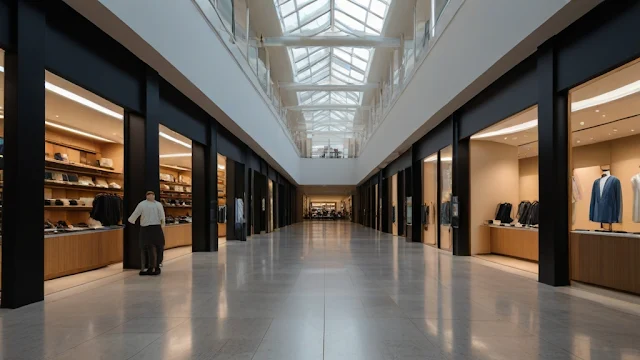In the dynamic world of retail, every inch of space within a store holds significant potential for driving sales and enhancing profitability. Retail space optimization is the strategic process of maximizing the efficiency and effectiveness of physical retail environments to achieve business objectives. From layout design to product placement and technology integration, every aspect plays a crucial role in shaping the overall shopping experience and influencing consumer behavior.
Introduction to Retail Space Optimization
In today's highly competitive retail landscape, businesses are constantly seeking ways to gain a competitive edge and increase their bottom line. One effective strategy is optimizing retail space to make the most of available resources and opportunities. By leveraging space intelligently, retailers can not only improve sales performance but also enhance the overall shopping experience for customers.
Understanding Retail Space Optimization
At its core, retail space optimization involves analyzing, planning, and implementing strategies to make the best use of available space within a retail environment. It encompasses various aspects, including store layout, product placement, visual merchandising, and technology integration, all aimed at maximizing efficiency and driving sales.
Planning and Layout Design
The layout of a retail space plays a crucial role in shaping the customer's journey and influencing their purchasing decisions. Retailers need to carefully consider factors such as traffic flow, product visibility, and ease of navigation when designing their store layout. By adopting effective layout strategies, such as grid layout, loop layout, or free-flow layout, retailers can create an inviting and organized shopping environment that encourages exploration and engagement.
Visual Merchandising Techniques
Visual merchandising is another key component of retail space optimization, focusing on the presentation and display of products to attract customers and drive sales. By strategically arranging products, using eye-catching displays, and creating themed showcases, retailers can capture the attention of shoppers and entice them to make purchases.
Product Placement and Inventory Management
Effective product placement is essential for maximizing sales and minimizing inventory costs. By analyzing sales data and customer behavior, retailers can optimize product placement to ensure that high-demand items are prominently displayed while slow-moving inventory is strategically positioned to encourage sales.
Technology in Retail Space Optimization
In today's digital age, technology plays a crucial role in enhancing retail space optimization. From interactive displays and digital signage to RFID tracking systems and AI-powered analytics, retailers have access to a wide range of tools and technologies that can help them optimize space, streamline operations, and personalize the shopping experience.
Customer Experience Enhancement
In addition to optimizing space for maximum efficiency, retailers must also prioritize enhancing the overall customer experience. By providing personalized service, offering seamless checkout options, and creating immersive shopping environments, retailers can build customer loyalty and drive repeat business.
Data Analysis and Decision Making
Data analysis is a fundamental aspect of retail space optimization, enabling retailers to make informed decisions based on real-time insights and trends. By leveraging data analytics tools and technologies, retailers can gain valuable insights into customer behavior, sales performance, and market trends, allowing them to optimize space allocation and merchandising strategies accordingly.
Sustainability in Retail Space Optimization
As sustainability becomes increasingly important to consumers, retailers are embracing eco-friendly practices in their store design and operations. By incorporating sustainable materials, reducing energy consumption, and implementing recycling initiatives, retailers can not only minimize their environmental impact but also appeal to environmentally conscious consumers.
Challenges and Solutions
Despite the benefits of retail space optimization, retailers may encounter challenges such as limited space, changing consumer preferences, and budget constraints. However, by adopting innovative solutions and embracing flexibility, retailers can overcome these obstacles and adapt to evolving market conditions.
Case Studies
Numerous retailers have successfully implemented retail space optimization strategies to drive sales and enhance the shopping experience. Case studies of leading brands such as IKEA, Apple, and Nike demonstrate how innovative design, strategic product placement, and technology integration can transform retail spaces and drive business growth.
Future Trends
Looking ahead, the future of retail space optimization is expected to be driven by advancements in technology, changing consumer expectations, and a greater focus on sustainability. Emerging trends such as augmented reality shopping experiences, modular store designs, and experiential retail concepts are likely to shape the retail landscape in the years to come.
Conclusion
In conclusion, retail space optimization is a critical component of success in today's competitive retail market. By maximizing the efficiency and effectiveness of physical retail environments, retailers can enhance the shopping experience, drive sales, and ultimately increase profitability. By embracing innovative strategies, leveraging technology, and prioritizing customer satisfaction, retailers can position themselves for long-term success in an ever-evolving industry.









0 Comments
In case you have questions or queries related to this post/article please comments down below will get back to as soon as possible.